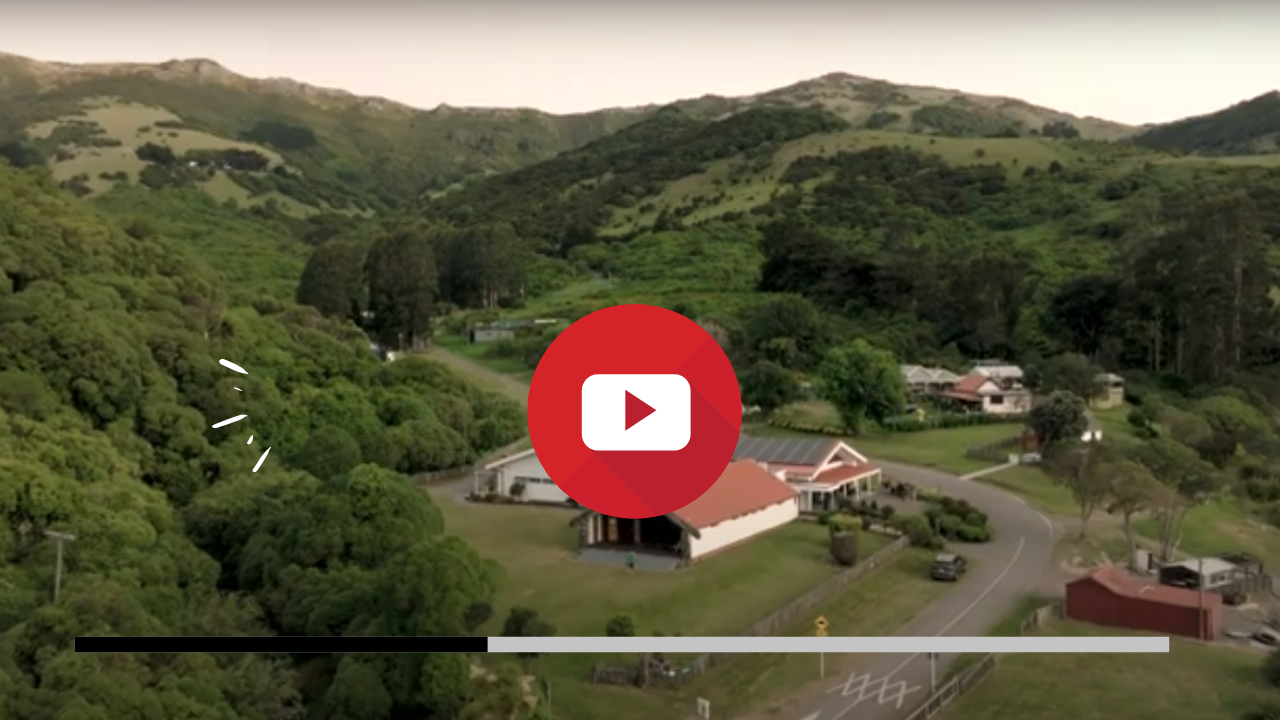14 December 2022
Descending from across Aotearoa, members of Bioprotection Aotearoa (BA) gathered before the gates of Ōnuku Marae, Akaroa, to participate in our inaugural Noho Marae.
Through the playful sounds of the harbour waters and the native birds singing nearby, the karanga rang out – the first voice of Tangata Whenua calling our rōpū to begin their whakaeke, advancement into the Marae.
For many attendees, not only was it the first time meeting kanohi-ki-te-kanohi (face to face), it was their first time on a Marae.
Director, Professor Amanda Black (Tuhoe, Whakatōhea, Te Whānau ā Apanui) says in the wake of the pandemic, it was important “to get people to connect to one another on a personal and professional level, and this Noho Marae was the proper way to do it.”
The two-day event was filled with experiences and knowledge-sharing opportunities that built whanaungatanga, strengthened relationships, and connections, and fostered kotahitanga for everyone in attendance.
In addition to these strong themes, the following kōrero was expressed during the poroporoaki, the farewell speeches at the end of our noho.
“This wānanga showed that we can actually all work together. In science and the system that we have, there are some silent and invisible barriers that exist. But Bioprotection Aotearoa disproves that. It shows that we can all work together, despite that we are ngā hau e whā.”
Many hands united, working together to ensure the success of this event. Before we share some of these highlights, we would like to take this time to acknowledge Te Ahi Kā ō Ōnuku; Uncle Bruce Robinson, Corey Ackerman, Pip Tainui and Rei Tainui for welcoming and sharing their manaakitanga with us.
Mā whero, mā pango, ka oti te mahi
Unity: through red (chiefs) and black (the tribe) the work will be done.
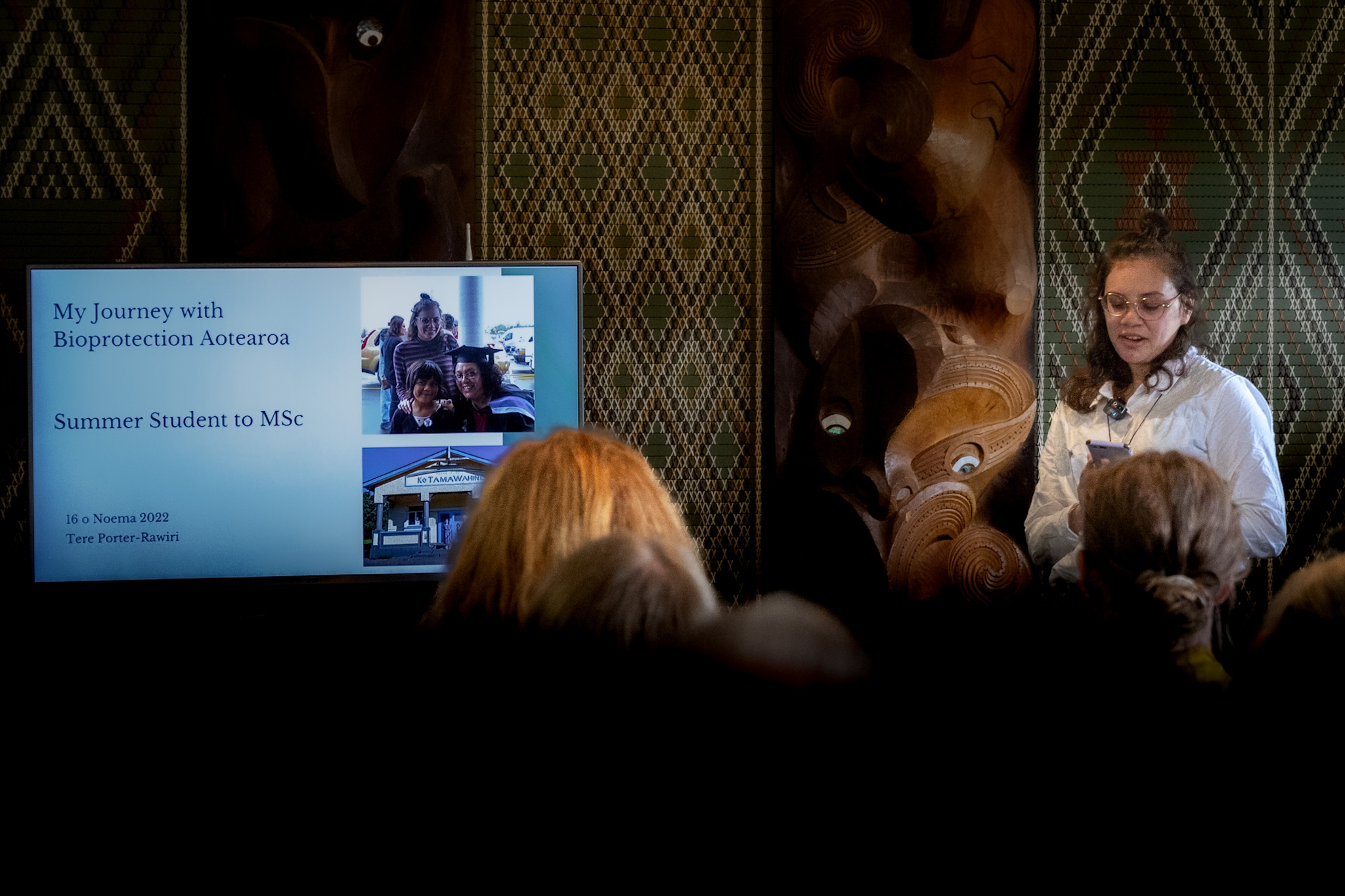
Early Career Researcher, Tere Porter-Rawiri sharing a presentation at Ōnuku Marae
ECR Research Presentations
Our Early Career Researchers (ECRs) kicked off our programme with three-minute presentations, offering a ‘taster’ into their research.
The treasury of bioprotection knowledge emerging from our ECR’s, demonstrated the depth of multi-disciplinary research transpiring from each pou of our research framework, Te Taiao-a-rangi.
From here, thoughts were flying which later stimulated conversations around the potential for collaborations accross pou and projects.
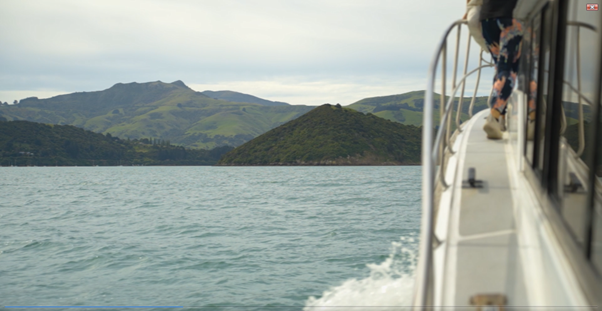
Pipi Journeys taking a group from Bioprotection Aotearoa on a cruise around Akaroa Habour
Boat trip on Akaroa Habour
Later that afternoon, activities were offered to experience the natural beauty of the Horomaka (Banks Peninsula). Pipi Journeys took a group for a sunset cruise to learn about the Māori connection to the area and it’s rich history.
Aunty Pip Tainui explained that prior to the European settlers arriving, the area was a thriving hub of trade, predominantly harakeke (flax) and food for early whalers and visitors who were looking to replenish supplies.
Many different hapū had settlements in the Horomaka. But after the Treaty was signed in Ōnuku, in 1840, land ownership across the peninsula, transferred from Māori to the crown. This left, only a small area of land reserved for Māori ownership, where Ōnuku Marae now stands.

Hugh Wilson, Hinewai Reserve Manager entertaining another group from Bioprotection Aotearoa
Tour around Hinewai Reserve
Far away on the hills of the Horomaka, another group enjoyed a tour around Hinewai Reserve. Hinewai is an ecological restoration project, privately owned and managed by the Maurice White Native Forest Trust, but freely open to the public on foot.
The touring group was entertained by Reserve Manager, Hugh Wilson, sharing his delightful korero of the restoration efforts over the past 30 years.
One of the main goals was to support the natural regeneration of native vegetation and wildlife. “We are not replanting it, nature is doing most of the work,” Hugh boasted to the group. “It’s not about what is lost, it’s about what is still here.”
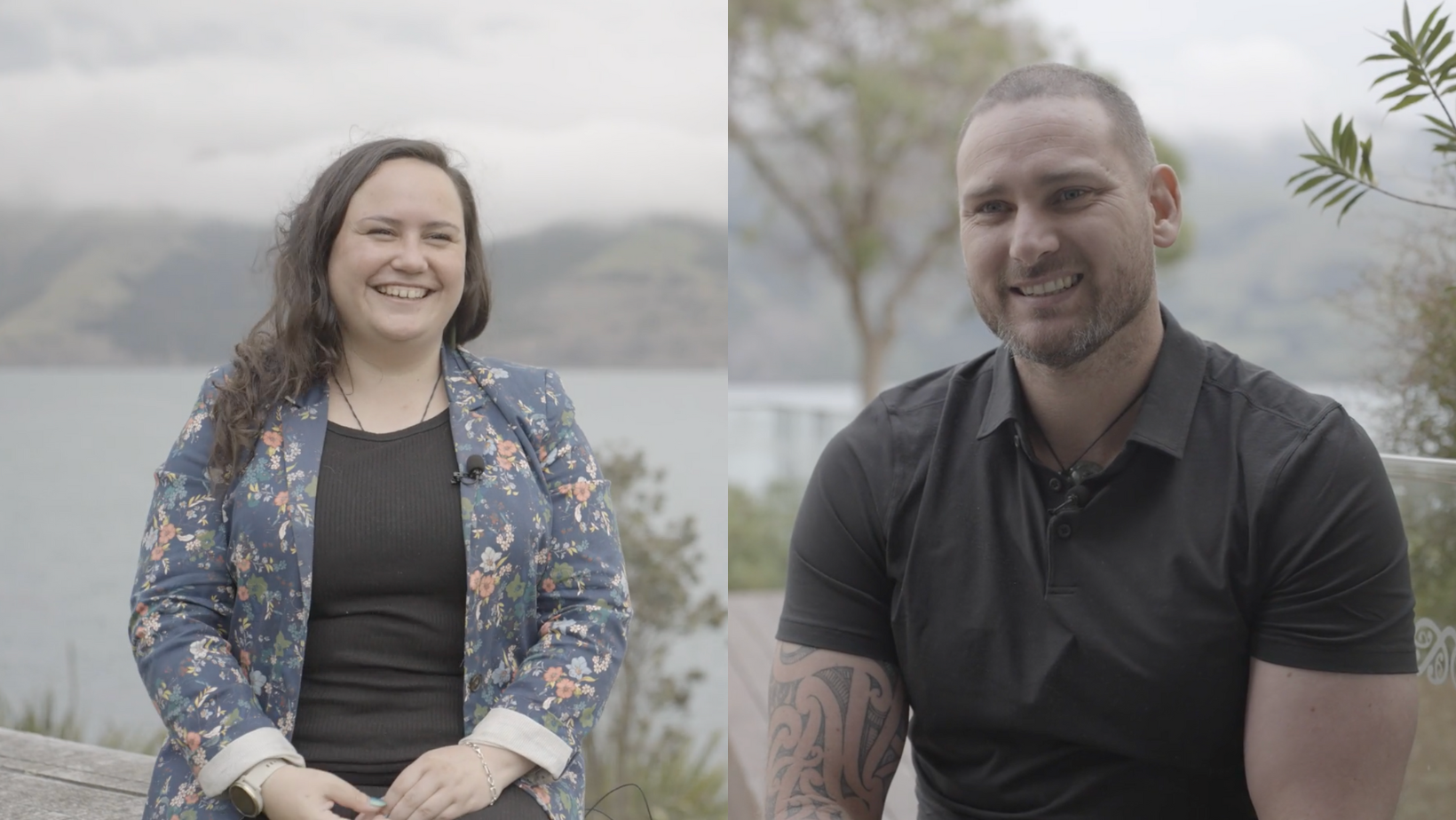
Jaleesa Panirau, Chair of Wairewa Rūnanga (left) and Mananui Ramsden, Chair of Te Rūnaka o Koukourarata (right)
Discussion panel with local rūnanga
On day two, the morning started with a panel discussion with invited mana whenua Mananui Ramsden (Te Rūnaka o Koukourarata) and Jalessa Panirau (Wairewa Rūnanga).
Discussions were rich in the exploration of adequate engagement and relationship building between mana whenua and research institutions.
The depth and quality of the relationship are often diminished by the restriction surrounding the timeline of a project, and often when engagement is sought the research is already at 60%.
“Just because the intent is good, doesn’t mean we can apply pressure. Be patient to build capacity,” shared Mananui.
“We have so many organisations come at us at once,” added Jaleesa. “For Wairewa, it’s the way you engage with us. If you mixed our Mātauranga with your science, that’s a beautiful thing.”
The panel agreed that the depth of the relationship will go a long way when nurtured with patience and value beyond the project’s funded timeline.
“Research aligned with a community voice is actually powerful as a collective. There is something in this collective power,” says Mananui.
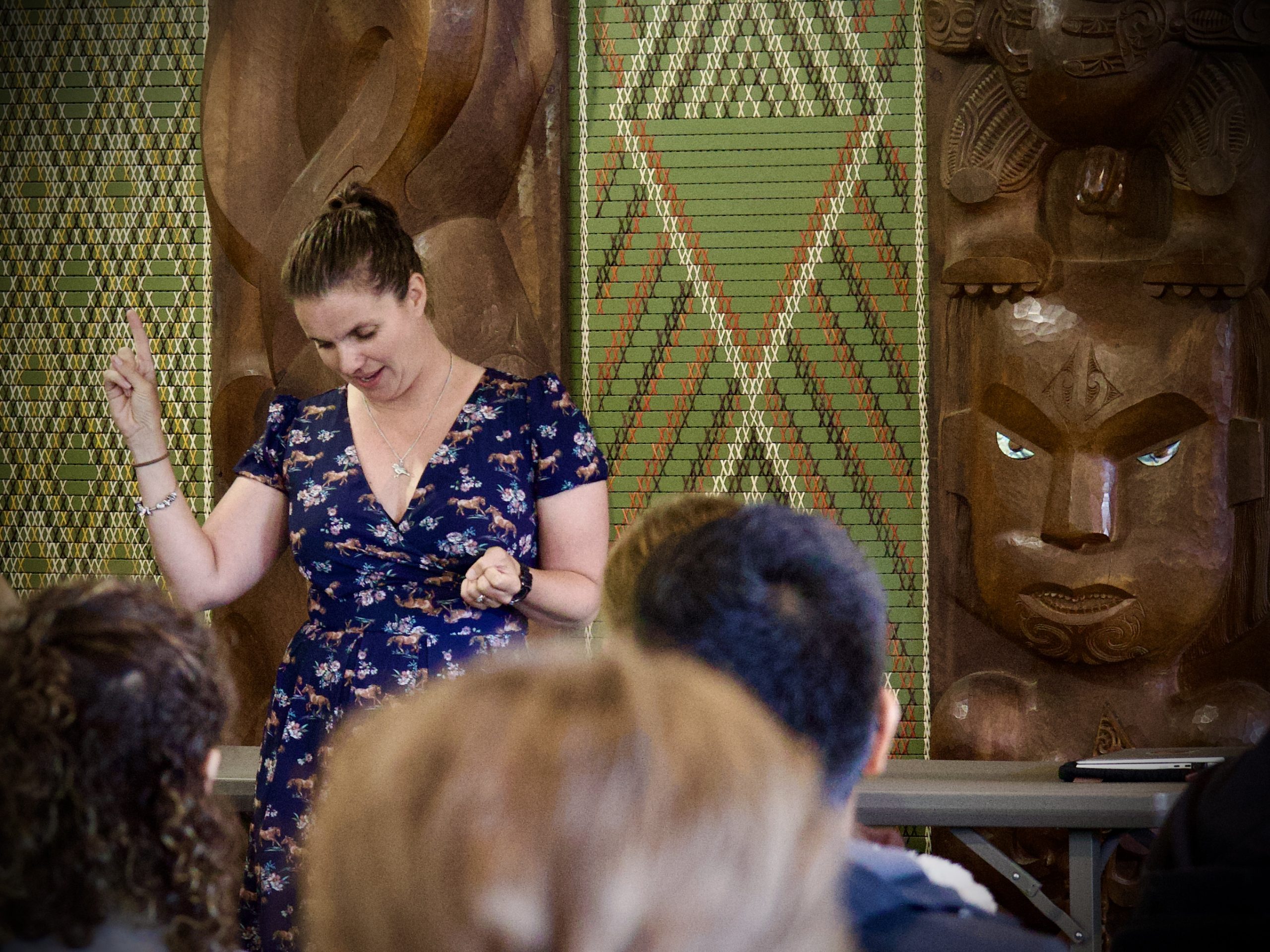
Nicola Toki, Chief Executive of Forest and Bird, presenting at Ōnuku Marae
Guest speaker, Nicola Toki, Chief Executive of Forest & Bird
Forest & Bird Chief Executive Nicola Toki, captivated the next session with her storytelling, reminding everyone about the power of science communication that resonates across communities and speaks to everyone’s hearing.
Nicola encouraged researchers to speak in a voice that resonates with a wider audience, including decision-makers, communities, Iwi, politicians, and business. “Particularly as people who hold knowledge, this is just so crucial.”
Nicola says that it doesn’t matter where scientists and researchers end up working, whether they are at a research institution or an NGO, what matters is their influence and input.
“Don’t underestimate the power of being able to describe connection,” Nicola shares. “The power of connection with people, that’s massive! The ability to demonstrate to people, the connection between the web of life and how that impacts us and future generations is crucial.”
Nicola doesn’t think she hears enough of this and believes Bioprotection Aotearoa has the ability to draw these threads of connection, which is powerful.
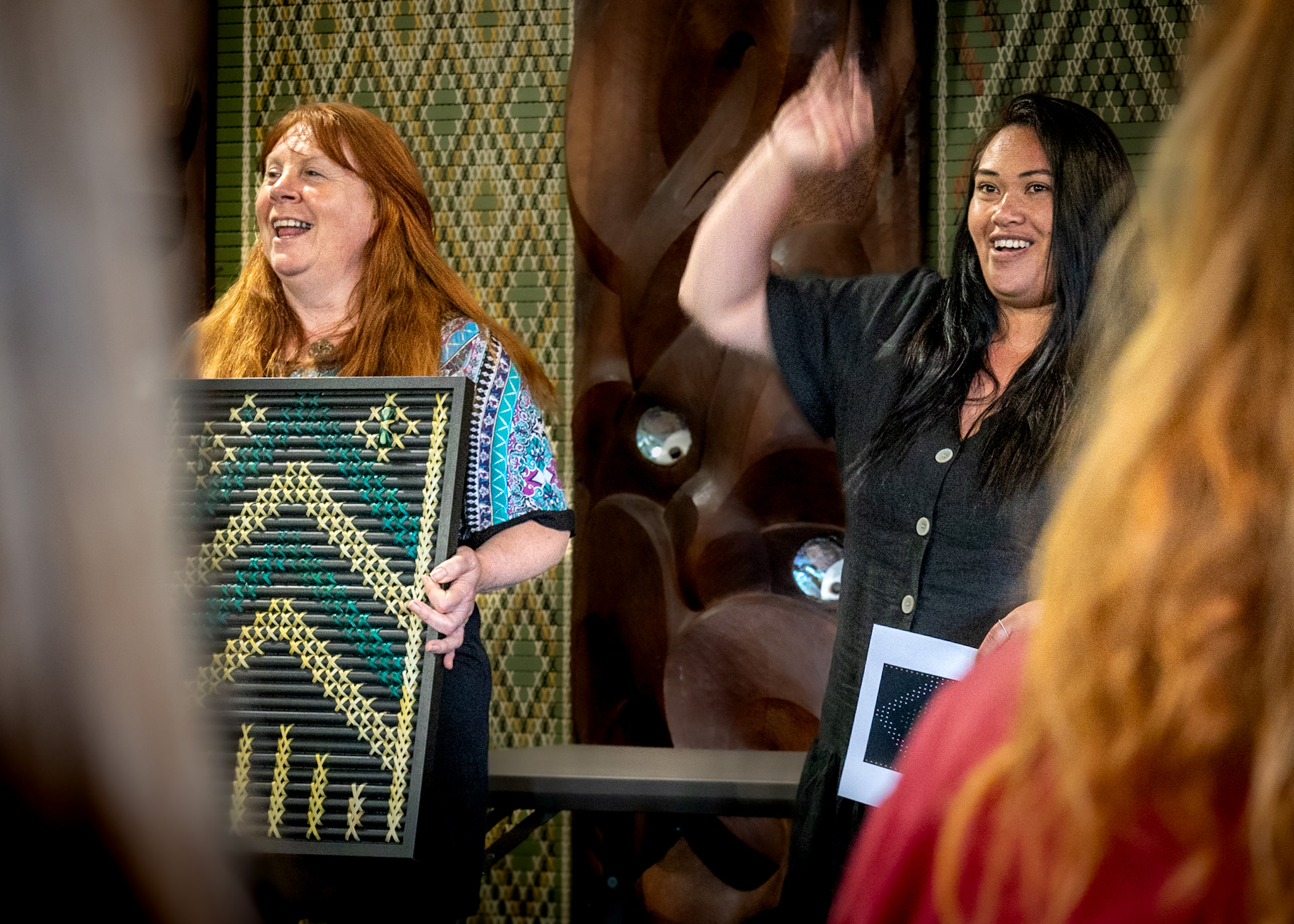
Local weavers Cathy Payne (Left) and Lisa Harding (Right) from the Kahu Collective
Weaving with the Kahu Collective
Joining us for our noho Marae, was the Kahu Collective, a group of local weavers from Ōtautahi who all share a passion for Raranga (weaving) and want to awaken the world to both its beauty and healing properties.
They ran a workshop alongside our programme, guiding us on how to weave harakeke and sharing a little bit about the history and tikanga involved in this beautiful traditional art. By the end of our noho we collectively wove a tukutuku panel, filled with our own stories, and a design that embodies our values as a CoRE.
Te Pū Whetū o te Taiao – Aspiring to the highest pinnacle of science. The name gifted by Huata Arahanga during the poroporaki (farewell speeches).

Jamilah Limu Ward from Waharoa co-op café and boutique catering
Nourishing kai
Keeping us all well nourished, was Waharoa co-op café and boutique catering. Their food was plentiful, ensuring all dietary requirements were covered. The generosity and care by Jamilah and her team ensured everyone was well fed and energised with their gift of wholesome kai.
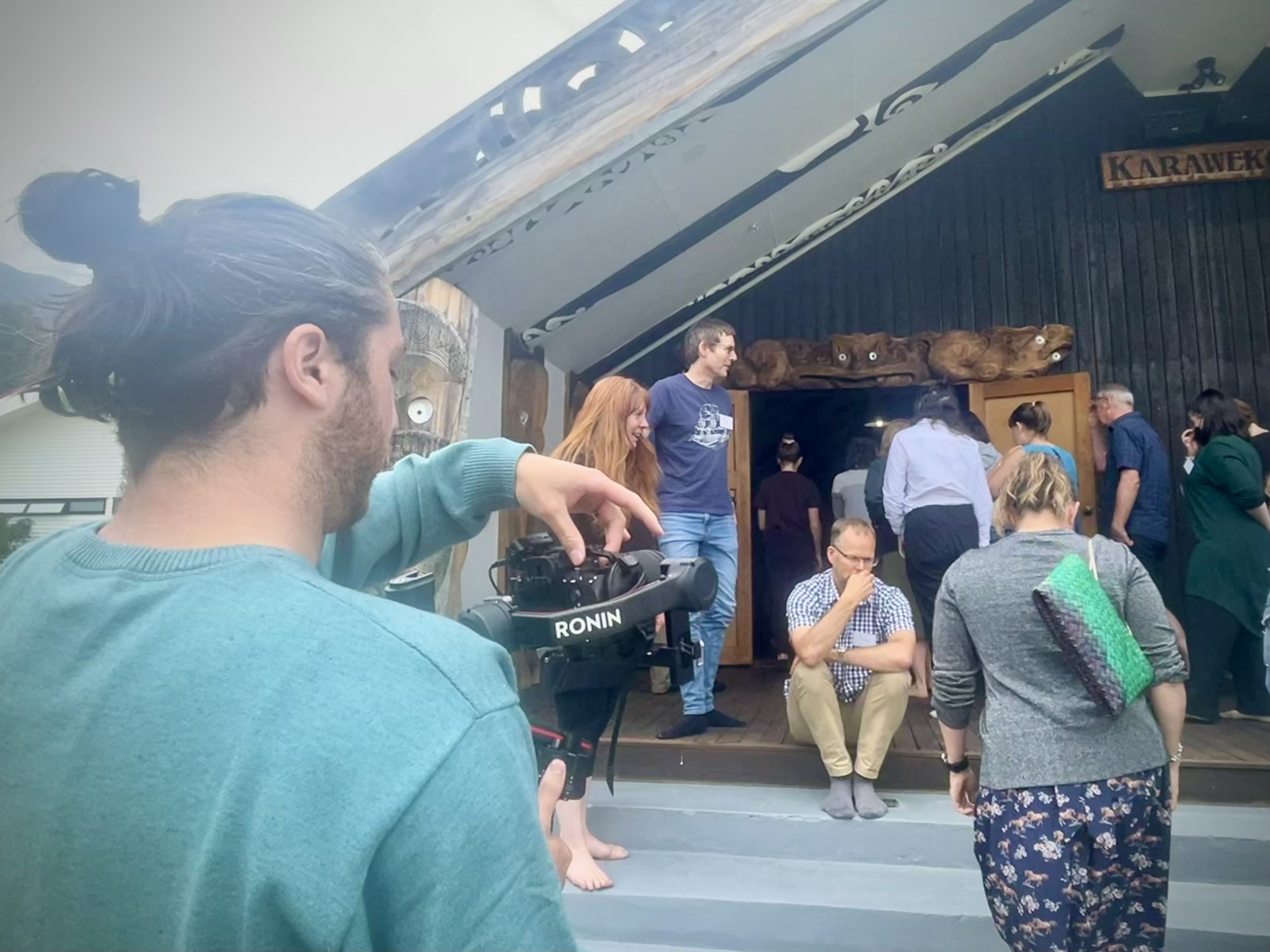
Behind the scenes with Maui Studios, and their camera operator Max Tiweka
Documenting our kaupapa
Behind the scenes was Maui Studios quietly capturing and documenting our experience. They are a team of passionate creative practitioners, who shone a light on our Kaupapa with their story telling abilities.
Ehara taku toa i te toa takitahi, engari he toa takitini
Success is not the work of an individual, but the work of many

